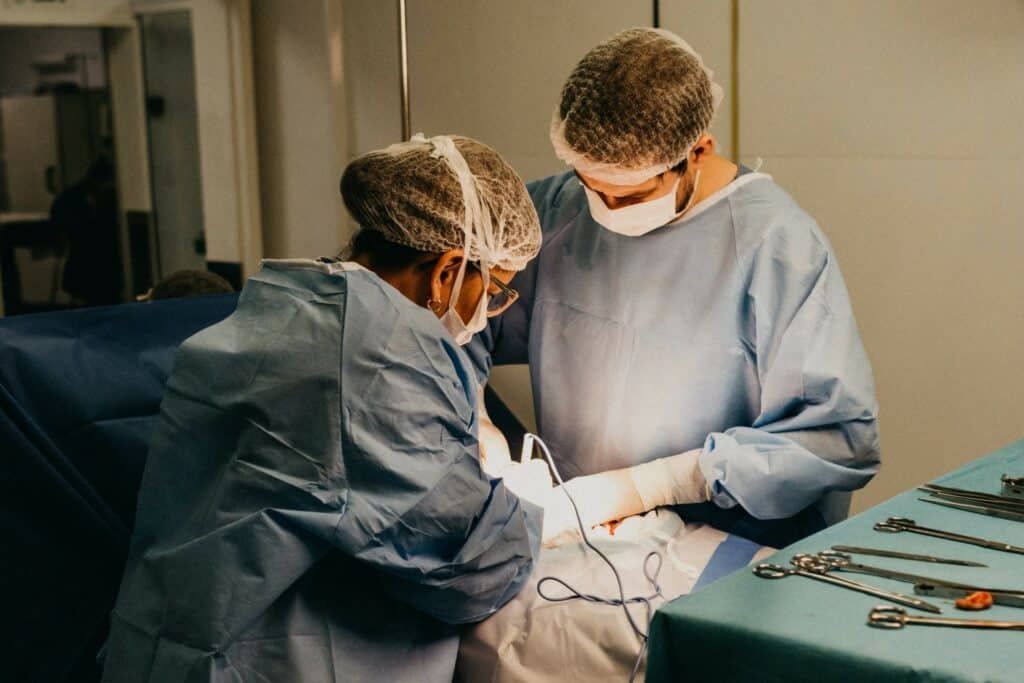Flat head syndrome, also known as positional plagiocephaly, is a common condition that affects many babies worldwide. It occurs when a baby’s head develops a flat spot, usually on one side or at the back, due to prolonged pressure in one position. While helmets have been the go-to treatment option for many years, there are non-helmet alternatives to fix a baby’s flat head.
Understanding Flat Head Syndrome is the first step in treating it effectively. Flat head syndrome is a cosmetic condition that can also lead to developmental delays if left untreated. It is important to note that flat head syndrome does not affect brain development or cause any neurological problems. However, it can affect a baby’s appearance and self-esteem in the long run. In this article, we will explore How to Fix Baby’s Flat Head Without Helmet and preventing it from worsening.
Key Takeaways
- Flat head syndrome is a cosmetic condition that can also lead to developmental delays if left untreated.
- There are non-helmet treatment options available to fix a baby’s flat head.
- Preventing flat head syndrome is crucial to avoid the need for treatment later on.
Understanding Flat Head Syndrome
Flat head syndrome, also known as plagiocephaly, is a condition that affects the shape of a baby’s skull. It occurs when the baby’s head is in the same position for extended periods, leading to a flat spot on the back or side of the head.
The skull of a newborn baby is soft and pliable to allow for the growth of the brain. There are also two soft spots on the skull, known as fontanelles, which allow for the skull to expand as the brain grows. However, if a baby’s head is in the same position for extended periods, the soft bones of the skull can become flattened, leading to flat head syndrome.
There are two types of flat head syndrome: positional plagiocephaly and congenital plagiocephaly. Positional plagiocephaly occurs when a baby’s head develops a flat spot due to external factors such as sleeping on the back or spending too much time in a car seat or swing. Congenital plagiocephaly, on the other hand, is caused by the baby’s position in the womb or a birth defect.
Flat head syndrome is more common in babies who are premature, have a twin sibling, or have a muscular or neurological condition that affects their movement. However, it can affect any baby who spends too much time in the same position.
It is important to note that flat head syndrome is a cosmetic issue and does not affect a baby’s brain development or cognitive abilities. However, if left untreated, it can lead to facial asymmetry and uneven ears.
In the next section, we will discuss ways to prevent and treat flat head syndrome without the use of a helmet.
Causes of Flat Head in Babies
Flat head in babies is a common condition that occurs when a baby’s skull becomes flattened in one area. There are several causes of flat head in babies, including:

1. Back Sleeping
Since the 1990s, the American Academy of Pediatrics has recommended that babies be placed on their backs to sleep to reduce the risk of sudden infant death syndrome (SIDS). While this has been successful in reducing SIDS, it has also led to an increase in flat head syndrome.
2. Neck Muscles
Babies who have weak neck muscles are more likely to develop flat head syndrome because they are unable to move their heads from side to side.
3. Car Seat Use
Prolonged use of car seats can also contribute to flat head syndrome. The angle of the car seat can put pressure on the back of the baby’s head, leading to flattening.
4. Birth Canal
Babies who have a difficult delivery, such as those born through a narrow birth canal, may be at higher risk of developing flat head syndrome.
5. Constant Pressure
Babies who spend a lot of time in one position, such as lying on their backs or sitting in a swing, may develop flat head syndrome due to constant pressure on one area of the skull.
It is important to note that flat head syndrome is not caused by a lack of intelligence or developmental delays. It is a cosmetic condition that can be treated with simple interventions.
Preventing Flat Head Syndrome
Flat Head Syndrome, also known as positional plagiocephaly, is a common condition that affects many infants. Fortunately, there are several ways to prevent it without the use of a helmet.

1. Tummy Time
One of the most effective ways to prevent flat head syndrome is by giving your baby plenty of tummy time. This helps to strengthen their neck muscles and encourages them to lift their head, which can help prevent flat spots from forming on the back of their head.
2. Sleeping Position
It is important to ensure that your baby’s sleeping position is safe and comfortable. Always place your baby on their back to sleep, as this is the safest position to reduce the risk of Sudden Infant Death Syndrome (SIDS). However, you can alternate the direction in which your baby’s head faces each night to prevent flat spots from forming.
3. Repositioning
Repositioning your baby’s head during sleep and playtime can also help prevent flat spots from forming. Try placing toys or objects of interest on the opposite side of your baby’s head to encourage them to turn their head in that direction.
4. Neck Muscles
Encouraging your baby to use their neck muscles can help prevent flat head syndrome. Gently move your baby’s head from side to side during playtime to help strengthen their neck muscles.
5. Love and Support
Providing love and support to your baby is crucial in preventing flat head syndrome. Holding your baby often and providing plenty of cuddles can help encourage them to move their head and prevent flat spots from forming.
6. Habit
Developing a habit of repositioning your baby’s head and providing plenty of tummy time can help prevent flat head syndrome. Make it a part of your daily routine to ensure that your baby’s head is not in the same position for too long.
7. Holding Your Baby
Holding your baby in different positions can also help prevent flat head syndrome. Try holding your baby in a carrier or sling to encourage them to move their head in different directions.
By following these tips, you can help prevent flat head syndrome and ensure that your baby’s head develops properly.
Non-Helmet Treatment Options
There are several non-helmet treatment options available for infants with flat head syndrome, also known as positional plagiocephaly. These options include repositioning techniques, physical therapy, and the use of specialized pillows and baby carriers.
Repositioning techniques involve changing the position of the baby’s head while they sleep or play. This can be done by placing the baby on their stomach for supervised tummy time, or by using a rolled-up towel or blanket to prop up the baby’s head while they sleep on their back. It is important to alternate the side of the head that is being propped up to prevent a flat spot from forming.
Physical therapy, also known as physiotherapy, can help strengthen the baby’s neck and shoulder muscles, which can improve their ability to turn their head and reduce the pressure on one side of their head. This can be done through exercises and massage techniques, which can be taught by a licensed physical therapist.
Specialized pillows and baby carriers can also be used to help prevent or treat flat head syndrome. These products are designed to support the baby’s head and neck in a way that promotes proper alignment and reduces pressure on one side of the head. It is important to choose a product that is age-appropriate and safe for the baby to use.
In addition to these treatment options, it is important to create a safe and comfortable environment for the baby. This includes ensuring that the baby’s room is free of clutter and that they have plenty of space to move around and explore. Breastfeeding can also help promote proper head and neck alignment, as it encourages the baby to turn their head and use their neck muscles.
Overall, there are several non-helmet treatment options available for infants with flat head syndrome. By using a combination of repositioning techniques, physical therapy, and specialized products, parents can help their baby develop a healthy and symmetrical head shape.
Understanding Helmet Therapy
Helmet therapy, also known as cranial orthosis or plagiocephaly helmet therapy, is a treatment used to correct a baby’s flat head. A special helmet is worn by the baby for a certain period of time to help reshape their head.

The helmet is custom-made for each baby and is designed to apply gentle pressure in specific areas of the head. This pressure helps to redirect the growth of the skull and promote more symmetrical head shape.
Helmet therapy is typically recommended for babies between the ages of 4 and 12 months, when the skull is still soft and malleable. The duration of the treatment varies depending on the severity of the flat head and the age of the baby. In general, treatment can last anywhere from a few weeks to several months.
While helmet therapy can be effective in correcting flat head, it is not always necessary. In many cases, flat head will improve on its own with time and simple repositioning techniques. Parents should consult with their pediatrician to determine if helmet therapy is the best option for their baby.
It’s important to note that helmet therapy is not a one-size-fits-all solution. Each baby’s head is unique, and the helmet must be customized to fit their specific needs. The helmet is typically made of lightweight materials and is designed to be comfortable for the baby to wear.
In conclusion, helmet therapy can be an effective treatment for correcting a baby’s flat head. However, it is not always necessary and should only be considered after consultation with a pediatrician. The helmet is custom-made for each baby and is designed to be comfortable to wear.
When to Consult a Pediatrician
If a baby has a flat spot on their head or if their head shape appears abnormal, it is important to consult a pediatrician. A pediatrician can determine the cause of the flat spot and recommend appropriate treatment.
Pediatricians may recommend physical therapy or repositioning techniques to correct a flat spot caused by torticollis, a condition where the neck muscles are tight or weak, causing the baby to favor one side of their head. In severe cases, a helmet may be necessary to reshape the head.
If a pediatrician suspects craniosynostosis, a condition where the skull bones fuse too early, they may refer the baby to a specialist for further evaluation and treatment. This condition can cause an abnormal head shape and may require surgery.
It is also important to consult a pediatrician if a baby’s flat spot is severe or if it is accompanied by other symptoms, such as developmental delays or asymmetrical facial features. In rare cases, a flat spot may be a sign of a more serious underlying condition.
In addition, consulting a pediatrician can help prevent SIDS (Sudden Infant Death Syndrome) by ensuring that the baby is sleeping in a safe position and on a firm surface. Pediatricians can provide guidance on safe sleep practices and monitor the baby’s development to ensure they are meeting milestones.
Overall, consulting a pediatrician is important for the proper care and treatment of a baby with a flat spot on their head. They can provide guidance on appropriate treatment options and monitor the baby’s progress to ensure optimal outcomes.
Treatment Plan for Severe Cases
When it comes to treating severe cases of flat head syndrome, a comprehensive treatment plan is necessary. While helmets can be effective, there are alternative treatments available that do not require the use of a helmet.

The first step in treating severe cases of flat head syndrome is to identify the cause of the condition. If the flatness is due to a muscular or skeletal issue, physical therapy or chiropractic care may be recommended. If the flatness is due to a positional issue, repositioning techniques may be recommended.
In some cases, surgery may be necessary to correct the issue. This is typically only recommended in severe cases where other treatments have not been effective. The surgery involves reshaping the skull and is typically performed on infants under the age of one.
Once the cause of the flatness has been identified, a treatment plan can be developed. This may include a combination of physical therapy, repositioning techniques, and surgery if necessary. It is important to work closely with a healthcare professional to develop a treatment plan that is tailored to the individual needs of the child.
Overall, while severe cases of flat head syndrome may require more intensive treatment, there are alternative options available that do not require the use of a helmet. By working closely with a healthcare professional, parents can develop a treatment plan that is effective for their child’s specific needs.
Special Considerations for Premature Babies
Premature babies are at a higher risk of developing a flat head due to their soft and pliable skull bones. If your baby was born prematurely, there are some special considerations to keep in mind when trying to fix their flat head.
NICU Stay
If your baby spent time in the Neonatal Intensive Care Unit (NICU), they may have spent a lot of time lying on their back due to the medical equipment and monitoring devices. This can increase the risk of developing a flat head. It is important to start repositioning your baby as soon as possible to prevent further flattening.
Brain Damage
Premature babies may also be at a higher risk of developing brain damage, which can affect their motor skills and ability to turn their head. If your baby has a medical condition that affects their ability to move their head, it is important to work closely with your healthcare provider to determine the best course of action for fixing their flat head.
Repositioning
Repositioning is still the first line of defense for fixing a flat head in premature babies. However, it may be necessary to work with a physical therapist or other healthcare professional to determine the best positions for your baby based on their medical history and condition.
Cranial Molding
In some cases, cranial molding may be necessary to correct a flat head in a premature baby. However, this should only be done under the guidance of a healthcare professional with experience in working with premature babies.
Overall, fixing a flat head in a premature baby requires careful consideration and collaboration with healthcare professionals. With proper care and attention, it is possible to correct a flat head and prevent further complications.
Feeding Positions and Their Impact
The position in which a baby is fed can have a significant impact on the shape of their head. Both bottle feeding and breastfeeding positions can affect the development of a baby’s skull.
When bottle feeding, it is essential to hold the baby in an upright position to prevent milk from flowing back into the middle ear and causing an ear infection. However, it is also important to avoid keeping the baby’s head in the same position for too long. Changing the position of the baby’s head during feedings can help prevent flat spots from forming.
Breastfeeding also requires proper positioning to prevent flat spots. The American Academy of Pediatrics recommends alternating the breast used for feeding and changing the baby’s position during feedings. This can help ensure that the baby’s head is not consistently resting in the same position.
In addition to alternating sides and positions during feedings, there are other ways to promote healthy head development. Tummy time, where the baby is placed on their stomach while awake and supervised, can help strengthen neck muscles and reduce the risk of flat spots. Additionally, carrying the baby in a sling or carrier can help distribute pressure evenly across the head.
Overall, proper feeding positions and regular changes in position can help prevent flat spots from forming on a baby’s head.
Choosing the Right Baby Products
When it comes to choosing the right baby products, parents have a lot of options to consider. From car seats to baby carriers, there are many products that can impact the shape of a baby’s head. Here are some things to keep in mind when selecting baby products to help prevent or correct flat head syndrome.

1. Car Seats
Car seats are an essential item for parents, but they can also contribute to flat head syndrome. It’s important to choose a car seat that provides adequate support for a baby’s head and neck. Look for a car seat with a headrest that is adjustable and can be positioned to support the baby’s head properly.
2. Baby’s Head Shape
When selecting baby products, it’s important to consider the shape of the baby’s head. If a baby has a flat spot on their head, it’s important to choose products that can help correct the issue.
3. Special Pillows
Special pillows designed to prevent or correct flat head syndrome can be a helpful tool for parents. These pillows are designed to distribute pressure evenly and promote proper head and neck alignment. Look for pillows that are made of breathable materials and are safe for babies to use.
4. Flat Head Pillows
Flat head pillows are another option for parents looking to correct flat head syndrome. These pillows are designed to gently reshape a baby’s head over time. It’s important to choose a pillow that is the right size for the baby and provides adequate support.
5. Amazon
Amazon is a popular online retailer that offers a wide range of baby products. When shopping on Amazon, make sure to read reviews and do your research to ensure you are selecting high-quality products that are safe for your baby.
6. Moderate Use of Rocker
Rockers can be a helpful tool for parents, but it’s important to use them in moderation. Prolonged use of a rocker can contribute to flat head syndrome. When using a rocker, make sure to monitor your baby’s head position and switch up their position frequently.
7. Baby Carrier
Baby carriers are a popular choice for parents looking to keep their baby close and comfortable. When selecting a baby carrier, look for one that provides adequate support for the baby’s head and neck. It’s also important to choose a carrier that is comfortable for both the baby and the parent.
Overcoming Cosmetic Concerns
A flat head can be a cosmetic issue for parents. They may worry that their baby’s head shape will be noticeable or will cause their child to be self-conscious in the future. However, it’s important to remember that a flat head is a common issue and can be easily addressed without the use of a helmet.

Parents may notice a difference in their baby’s head shape after a few weeks of repositioning and molding techniques. However, it’s important to note that every baby is different and some may take longer to see results. Consistency is key in this process.
Molding techniques can help reshape a baby’s head by encouraging the skull bones to grow in a more symmetrical manner. These techniques can include repositioning the baby during sleep, tummy time, and holding the baby in different positions throughout the day.
It’s important to consult with a pediatrician or physical therapist before attempting any molding techniques. They can provide guidance on the appropriate techniques for your baby’s age and specific needs.
Overall, overcoming cosmetic concerns related to a flat head can be achieved through consistent use of molding techniques and consulting with a healthcare professional. With patience and dedication, parents can help their baby achieve a more symmetrical head shape without the use of a helmet.
Conclusion
In conclusion, parents can take steps to fix their baby’s flat head without using a helmet. It is important to start addressing the issue as soon as possible after birth. The American Academy of Pediatrics recommends supervised tummy time, repositioning techniques, and using a firm mattress for sleep.
Parents can also provide love and support to their baby during this process. It is important to remember that flat head syndrome is a common condition and does not reflect a lack of care or attention from parents.
By implementing these techniques, parents can help their baby’s head shape improve over time. It is important to remain confident and knowledgeable while addressing this issue, and to seek guidance from a healthcare provider if necessary.
Overall, with patience and persistence, parents can help their baby achieve a rounder head shape without the use of a helmet.
Related post: How to Hang Little Tikes Swing from Tree
Frequently Asked Questions
How can I correct my baby’s flat head without using a helmet?
There are several ways to correct your baby’s flat head without using a helmet. One way is to encourage tummy time, which helps to strengthen your baby’s neck muscles and prevent them from lying on the back of their head for extended periods. Another way is to change your baby’s position frequently while they are sleeping, so they are not always lying on the same spot.
What are some effective ways to fix a baby’s flat head?
Aside from tummy time and changing your baby’s position frequently, there are other effective ways to fix a baby’s flat head. Some parents have found success with craniosacral therapy, which involves gentle manipulation of the skull and spine to improve alignment. Other parents have found success with chiropractic adjustments or physical therapy.
Is it possible to fix a baby’s flat head without a helmet?
Yes, it is possible to fix a baby’s flat head without a helmet. While helmets can be effective in some cases, they are not the only solution. By encouraging tummy time, changing your baby’s position frequently, and exploring alternative therapies like craniosacral therapy, chiropractic adjustments, or physical therapy, you can help correct your baby’s flat head without a helmet.
What are some exercises that can help fix a baby’s flat head?
There are several exercises that can help fix a baby’s flat head. One exercise is to gently massage your baby’s head in a circular motion, focusing on the flat spot. Another exercise is to encourage your baby to turn their head to the opposite side of the flat spot while they are sleeping or lying down. Additionally, you can try placing toys or objects on the opposite side of the flat spot to encourage your baby to turn their head.
When is it too late to fix a baby’s flat head?
It is never too late to start correcting your baby’s flat head. While it may be easier to correct the issue when your baby is younger, there are still ways to fix a flat head in older babies. It is important to start correcting the issue as soon as possible, however, to prevent it from becoming more severe.
What are the risks of not fixing a baby’s flat head?
If left untreated, a baby’s flat head can lead to developmental delays, neck issues, and other complications. It can also cause cosmetic concerns, as the flat spot may become more noticeable as the baby grows. It is important to address the issue as soon as possible to prevent these potential complications.

Iesha is a loving mother of 2 beautiful children. She’s an active parent who enjoys indoor and outdoor adventures with her family. Her mission is to share practical and realistic parenting advice to help the parenting community becoming stronger.
